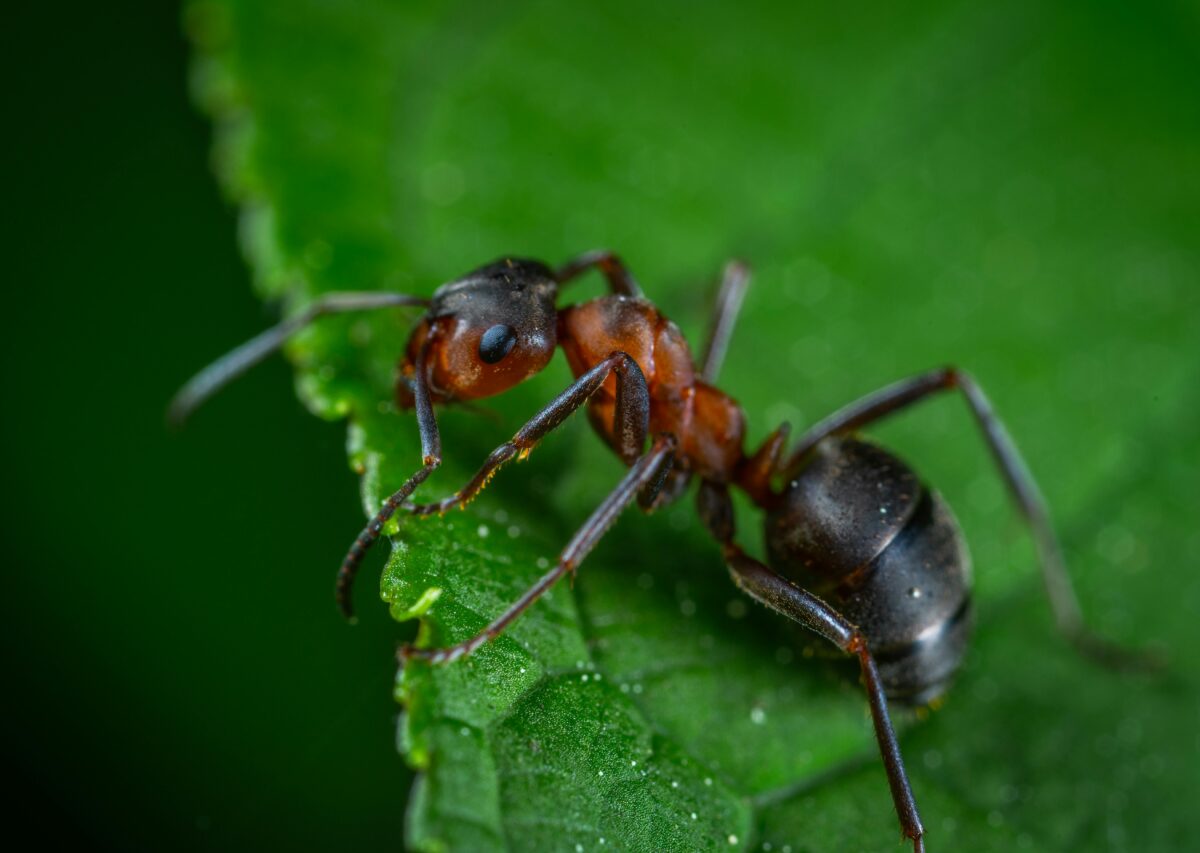Carpenter ants can wreak havoc on your home, silently damaging wooden structures and compromising their integrity. Understanding how to identify and effectively eliminate these pests is crucial for homeowners and property managers. This guide provides a comprehensive approach to carpenter ant removal, from identification to prevention, ensuring your space remains safe and pest-free.
How to Identify Carpenter Ants
Identifying carpenter ants early is key to preventing extensive damage. These insects are typically larger than other ant species, ranging from 1/4 to 1/2 inch in length. Their bodies are usually black or bicolored with red and black segments. Here are some specific traits to look for:
- Body Shape: Carpenter ants have a smooth, rounded thorax without spines.
- Color: Most commonly black, but some species may be reddish or yellowish.
- Antennas: They have bent or elbowed antennae.
Distinguishing Carpenter Ants from Other Ants
While many ants may invade your home, carpenter ants can be distinguished by their size and behavior. Unlike sugar ants or fire ants, carpenter ants do not build mounds but prefer hollowing out wood for nesting. Observing their foraging patterns is another clue; they often travel in irregular trails.
Signs of a Carpenter Ant Infestation
Recognizing the signs of a carpenter ant infestation is crucial for timely action. Here are some indicators:
- Wood Shavings: Look for small piles of wood shavings, often found near wooden structures.
- Frass: This is a sawdust-like material created when ants tunnel through wood.
- Rustling Noises: Listen for faint rustling sounds within walls, especially at night.
- Visible Ants: Spotting worker ants, especially during warmer months, can indicate a nearby nest.
Why Carpenter Ants Are a Problem
Carpenter ants can cause significant structural damage to your home. Unlike termites, which consume wood, carpenter ants excavate it to create nests. This can lead to:
- Structural Weakness: Over time, they can compromise beams, walls, and ceilings.
- Increased Repair Costs: Damage may necessitate costly repairs or replacements.
- Potential for Other Pests: An infestation may attract other pests or indicate moisture issues.
Step-by-Step Guide to Getting Rid of Carpenter Ants
Effectively eliminating carpenter ants requires a systematic approach. Follow these steps for DIY removal:
Step 1: Locate the Nest
Finding the nest is critical. Start by inspecting areas where you’ve noticed signs of infestation, such as:
- Inside walls
- Basements
- Attics
- Wooden furniture
Step 2: Use Bait Stations
Once the nest is located, set up bait stations near foraging trails. Here’s how:
- Choose a commercial bait product designed for carpenter ants.
- Place the bait near areas of activity.
- Monitor the bait for activity; it may take several days to see results.
Step 3: Apply Insecticidal Dust
Insecticidal dust can be applied directly into the nest area. Follow these steps:
- Wear protective gear, including gloves and a mask.
- Use a duster to apply the insecticide into wall voids and other hiding spots.
- Follow the manufacturer’s instructions for application rates and safety precautions.
Step 4: Seal Entry Points
Prevent future infestations by sealing potential entry points:
- Inspect for cracks and crevices in walls, foundations, and windows.
- Use caulk or expanding foam to seal these openings.
- Ensure that doors and windows close tightly.
Best Carpenter Ant Treatments: DIY and Professional Options
When dealing with carpenter ants, you have options ranging from DIY methods to professional treatments. Here’s a comparison:
DIY Solutions
- Bait Stations: Cost-effective and safe for households with pets.
- Insecticidal Dust: Effective for direct application but requires careful handling.
- Natural Remedies: Solutions like diatomaceous earth can deter ants without chemicals.
Professional Extermination
- Comprehensive Inspection: Professionals will assess your home for infestations and potential nesting sites.
- Advanced Treatments: They may use specialized equipment and targeted insecticides.
- Long-Term Solutions: Professionals can provide ongoing monitoring and preventative measures.
While DIY methods can be effective for small infestations, larger infestations may require professional intervention to ensure complete removal.
Preventing Future Carpenter Ant Infestations
Preventing carpenter ants is essential for maintaining a pest-free home. Here’s a checklist of preventive measures:
- Eliminate Moisture: Fix leaks and ensure proper drainage around the foundation.
- Store Firewood Properly: Keep firewood elevated and away from the home.
- Regular Inspections: Check for signs of damage or infestation regularly.
- Maintain Landscaping: Trim trees and shrubs away from the house to reduce access.
When to Call a Professional Exterminator
If you’ve attempted DIY methods and still notice signs of carpenter ants, it may be time to call in a professional. Here are scenarios where professional help is advisable:
- The infestation is extensive, with multiple nests.
- You notice structural damage to your home.
- DIY treatments have not yielded results within a few weeks.
Professional exterminators have the expertise and tools necessary to address severe infestations effectively.
Checklist for Carpenter Ant Prevention
To keep your home free from carpenter ants, follow this checklist:
- Regularly inspect wooden structures for signs of ant activity.
- Seal cracks and gaps in foundations and walls.
- Store food in airtight containers to avoid attracting ants.
- Keep gutters clean and ensure proper drainage.
- Maintain a clean environment, free of debris and clutter.
By implementing these preventive measures, you can significantly reduce the risk of carpenter ant infestations.
